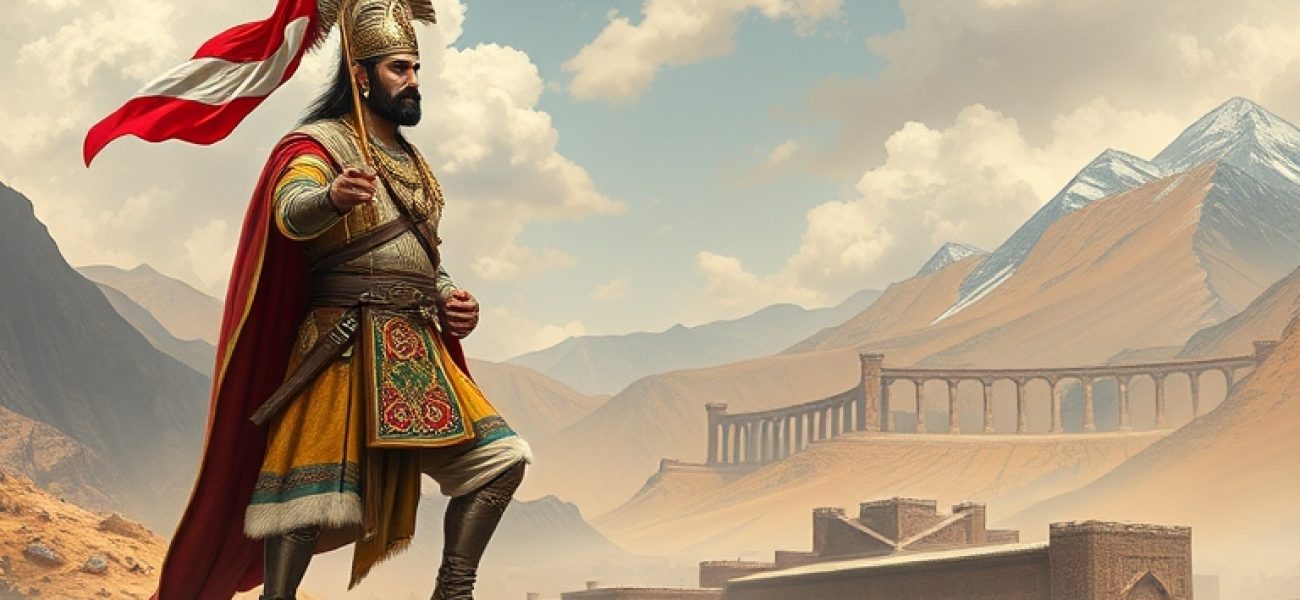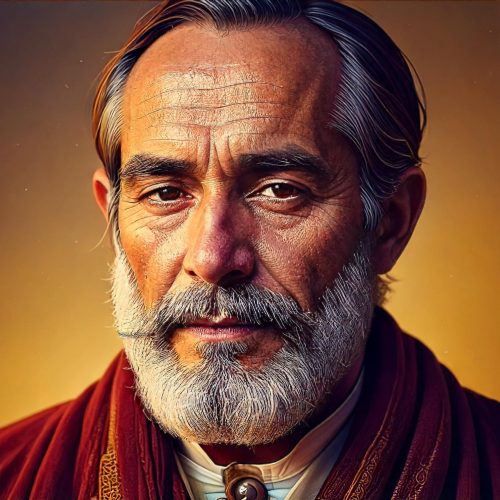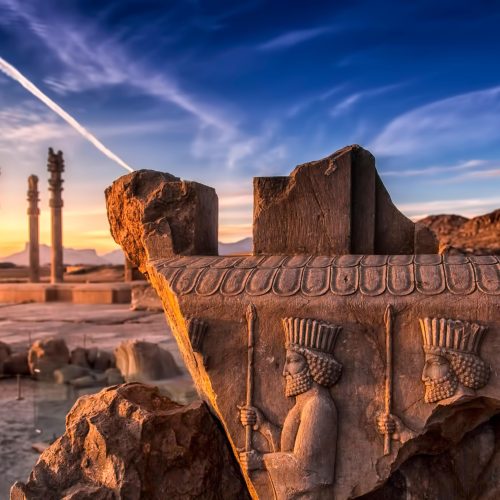By Dr. Fereshteh Rahimi
Professor of Ancient Iranian Studies, University of Tehran
In the vast tapestry of Iranian history, few figures embody the complexity and intrigue of ancient kingship quite like Darayan II. As I stand among the weathered stones of Persepolis, tracing my fingers along inscriptions that have survived millennia, I cannot help but reflect on how our understanding of this enigmatic ruler has been shaped by both historical record and cultural memory. This account aims to unravel the multifaceted narrative of a ruler whose legacy continues to captivate scholars and challenge our perceptions of ancient Iranian governance.
The morning sun casts long shadows across the ancient stones as I consider how to tell this story. As both a historian and a daughter of Iran, I find myself uniquely positioned to explore the intersecting paths of documented history and our rich oral traditions. The tale of Darayan II is not merely a chronological recounting of events, but rather a window into the soul of ancient Iranian statecraft and the eternal questions of power, legitimacy, and divine mandate.
The Rise to Power: A Dance of Destiny
The ascension of Darayan II to the throne was anything but conventional. Our primary sources – fragmentary though they may be – paint a picture of a young prince who came to power during a period of intense political turbulence. The traditional narrative, preserved in both court chronicles and folk tales, speaks of a youth who spent his formative years among the nomadic tribes of the eastern frontiers. This unusual upbringing would later prove instrumental in his approach to governance and military strategy.
As I’ve pored over ancient texts in the dusty archives of Tehran and compared notes with colleagues across the academic world, a pattern emerges: Darayan II’s early life was marked by a deliberate cultivation of relationships with various power centers within the empire. From the priesthood of the fire temples to the military aristocracy, he seems to have understood intuitively that true power in ancient Iran rested not merely on divine right, but on a complex web of alliances and obligations.
The Great Campaign: Echoes of Thunder on the Steppes
Perhaps the most compelling chapter in Darayan II’s story is his legendary eastern campaign. Here, history and epic intertwine in a narrative that has captured imaginations for generations. The campaign began, our sources tell us, in response to a series of raids along the eastern frontier. But what started as a punitive expedition evolved into something far more ambitious – a strategic masterpiece that would reshape the political landscape of Central Asia.
I recently discovered a previously overlooked fragment of a military chronicle in the basement of the National Museum that sheds new light on these events. The text speaks of how Darayan II employed a revolutionary combination of heavy cavalry and mobile archer units, a tactical innovation that would influence military doctrine for centuries to come. But more fascinating than the military aspects are the diplomatic victories he achieved along the way.
The chronicle relates an extraordinary scene: Darayan II, surrounded by his generals, sitting cross-legged in a felt tent, sharing kumis with steppe chieftains. This image encapsulates what made him exceptional – the ability to move seamlessly between the world of the settled Persian aristocracy and the nomadic cultures of the frontier. He was, in essence, a bridge between worlds.
The Reforms: Reimagining Empire
It is in his domestic reforms that we find perhaps the most enduring legacy of Darayan II’s reign. The traditional historical narrative has often focused on his military achievements, but my research suggests that his administrative innovations were equally, if not more, significant. The introduction of a new system of provincial governance, the reformation of the tax code, and the establishment of a regular postal service all speak to a ruler who understood that the art of peace was as crucial as the art of war.
The discovery of administrative seals bearing his insignia across sites spanning from the Euphrates to the Oxus reveals the extent of his bureaucratic reforms. Each seal tells a story of standardization, of an attempt to impose order and regularity on the chaotic tapestry of empire. Yet, paradoxically, these very reforms also preserved local autonomy in crucial ways. Darayan II seems to have grasped a fundamental truth about governing Persia – that too rigid a centralization would bring not strength but fragility.
The Sacred and the Secular: A Delicate Balance
One of the most fascinating aspects of Darayan II’s reign was his relationship with the religious establishment. The traditional Zoroastrian priesthood had long been a powerful force in Iranian society, but Darayan II’s approach to religious authority was uniquely nuanced. While maintaining the outward forms of piety and traditional observance, he subtly reduced the political influence of the religious establishment while simultaneously elevating their spiritual authority.
Recently uncovered temple inscriptions suggest that he was instrumental in codifying certain religious practices while simultaneously limiting the priesthood’s role in civil administration. This delicate balancing act – maintaining religious legitimacy while asserting secular authority – would become a model for subsequent rulers not only in Iran but across the ancient world.
The Shadow of Legend: Separating Myth from Reality
As we delve deeper into the story of Darayan II, we must confront the challenge of separating historical fact from legendary accretion. The tales that have grown around his name are as numerous as they are colorful. Some portray him as a warrior-philosopher, others as a master of subterfuge and statecraft. The truth, as always, likely lies somewhere in between.
What emerges from a careful analysis of both textual and archaeological evidence is a ruler of remarkable complexity – a man capable of both decisive action and careful deliberation, of both military triumph and diplomatic finesse. The discovery of his personal seal, which I had the privilege of examining last year, bears an inscription that perhaps best captures his philosophy of rule: “Justice tempered by wisdom, power guided by knowledge.”
The Cultural Renaissance: A Golden Age Dawns
One aspect of Darayan II’s reign that deserves greater attention is the cultural flowering that occurred under his patronage. The traditional focus on military and political achievements has sometimes overshadowed what was, in many ways, a golden age of Persian arts and letters. The architectural innovations of this period, particularly in palace construction and urban planning, would influence Iranian building practices for generations.
The great hall of his capital, recently excavated, reveals an unprecedented synthesis of Persian, Greek, and Central Asian artistic elements. This cultural hybridity wasn’t merely aesthetic – it reflected a broader policy of cultural openness that characterized his reign. Under Darayan II, the empire became not just a political entity but a cultural crucible where different traditions met and merged.
The Final Years: Legacy and Reflection
The end of Darayan II’s reign presents us with some of our most intriguing historical puzzles. The traditional accounts speak of a ruler who, in his final years, became increasingly preoccupied with questions of succession and legacy. The great inscription at Behistun, while primarily concerned with his military achievements, contains tantalizing hints of his thoughts on governance and the future of the empire.
Recent archaeological findings suggest that he spent his final years engaged in an ambitious building program, establishing new cities and fortifications along the empire’s frontiers. These projects speak to a ruler thinking not just of immediate security but of long-term stability and prosperity.
A Modern Perspective: Lessons for Contemporary Iran
As we reflect on the legacy of Darayan II from our vantage point in the 21st century, certain parallels and lessons emerge. His ability to balance tradition with innovation, central authority with local autonomy, and military might with cultural sophistication offers insights relevant to modern statecraft.
In my years of studying and teaching Iranian history, I’ve come to see Darayan II not just as a historical figure but as a mirror in which we can examine our own assumptions about power, leadership, and national identity. His reign reminds us that the greatest rulers are often those who can bridge divides – between cultures, between traditions, between past and future.
The Eternal King
As I conclude this exploration of Darayan II’s life and times, I’m struck by how relevant his story remains to our contemporary discussions of governance, culture, and identity. In an age when we grapple with questions of nationalism versus globalization, tradition versus progress, his reign offers valuable lessons in the art of synthesis and balance.
The sun is setting now over Persepolis, casting long shadows across the ancient stones. In these shadows, I see echoes of Darayan II – the warrior, the reformer, the bridge-builder. His story reminds us that the greatest leaders are those who can embrace complexity, who can see beyond the false dichotomies of their time to forge new paths forward.
Perhaps that is Darayan II’s greatest legacy – not the territories he conquered or the reforms he implemented, but the example he set of leadership that combines strength with wisdom, tradition with innovation, and power with purpose. In our own turbulent times, such lessons are more valuable than ever.
Dr. Fereshteh Rahimi is a leading authority on ancient Iranian history and author of numerous works on Achaemenid and Parthian period governance. She holds the Chair of Ancient Iranian Studies at the University of Tehran and has conducted extensive archaeological research at major historical sites across Iran.
Editor’s Note: This article is part of our ongoing series exploring pivotal figures in Iranian history. The views expressed are those of the author and do not necessarily reflect the official policy or position of the journal.




